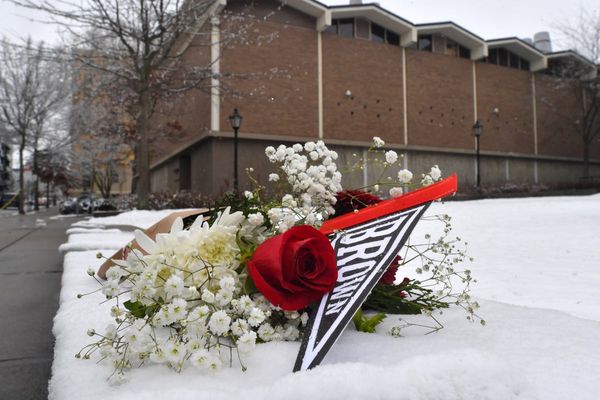
Australia’s big miners are not averse to a political fight.
Consider the biggest miner of them all: BHP.
In 2010, it fought fiercely against the super profits tax and helped bring down a prime minister. In 2017, a state party leader who championed an increase in mine lease fees in Western Australia lost his seat after a campaign by BHP.
And since 2022, the big miner has railed against Queensland’s revamped royalty scheme, brought in by Labor and now supported by the Liberal National government.
On Wednesday, BHP escalated its campaign by blaming “unsustainable” royalties and market conditions for its decision with its joint venture partner, Mitsubishi, to suspend operations at its Saraji South coalmine in the Bowen Basin, and slash 750 roles across the state.
Sign up: AU Breaking News email
The big miner said it will also conduct a strategic review of the BHP FutureFit Academy in Mackay – an educational facility that trains new miners – because of the royalty scheme’s “unsustainable impact on our business returns”.
Shortly after the announcement, two other miners operating in Queensland, Anglo American and QCoal, revealed job cuts.
Royalties alone don’t explain the decisions.
Dig deeper
The BHP Mitsubishi Alliance (BMA) operates five coking coalmines in Queensland’s Bowen Basin, most of which are open-cut operations. Coking coal, also known as metallurgical or met coal, differs from thermal coal used in heating – a business that BHP has been exiting.
There’s some pretty obvious reasons coalmines across Queensland aren’t as profitable as they used to be, most of which have nothing to do with the state’s tiered royalty rates.
Production costs have been rising as miners dig deeper into the earth. This takes more fuel, and causes expensive wear and tear on equipment, to get at it.
At the same time, worker wages and associated labour costs have risen in a sector that regularly experiences skills shortages.
“They’ve got a cost problem – and royalties are one of those elements – but they’re certainly not the main element,” says Andrew Gorringe, energy financial analyst at the Institute for Energy Economics and Financial Analysis.
“They’ve also been focused on getting volume at any cost. When the prices were good and they wanted to sell as much coal as they could, they expanded with little thought to costs.”
Coalminers recently emerged from a windfall period, marked by huge price rises after Russia’s invasion of Ukraine. Coking coal prices soared above $US600 a tonne in 2022, but have since normalised at under $US200.
In 2022, as prices were soaring, the then Labor government introduced three new royalty tiers to capture a greater share of wealth generated during commodity price spikes. The base rates, when prices are lower, remain the same.
The scheme agitates miners because it reduces, but in no way eliminates, the excesses they can earn during boom times, setting up an ideological clash between the resources sector and those who believe mineral wealth should be apportioned more evenly.
Gorringe says unit cash costs, which are a key profitability metric, for Queensland’s coking coal producers have risen 50% since 2018.
Royalties actually represent a lower percentage of their cost base in 2025 than they did before the pandemic, according to his analysis.
Coal ‘tax’
The ideological divide is evident in BHP’s description of royalties as the Queensland government’s “coal tax”, a politically charged term designed to stir up support for the resources sector in the community.
In Australia, state governments own the minerals in the ground. Miners pay a royalty to access them; they are not a tax.
It would be the ultimate mark of a successful lobbying campaign if the resources sector convinces the general public miners should pay a lower rate for a publicly owned resource.
The idea that the state purse might receive a higher rate when prices surge is particularly sensitive for coalminers because they are in a sector that may not have many booms left.
“Structural decline in one of Australia’s largest fossil fuel export commodities coupled with rising unit costs are the factors driving these investment and operating decisions, not Queensland’s nation-leading royalty scheme,” says Matt Pollard, an analyst at clean energy consultancy Climate Energy Finance.
While the role of coking coal in steelmaking will eventually be supplanted by cleaner alternatives, BHP argues that it is “considered indispensable for the foreseeable future”.
After commodity price booms subside, miners typically shed some jobs and re-focus on bringing down production costs, which is evident in the series of recent announcements from coalminers of workforce changes.
Some projects may simply not be viable outside boom times.
To be sure, Queensland’s royalty regime is a cost that miners must factor in to their anticipated workforce needs, but it is not the primary trigger for job cuts in a sector that appears to be in decline.
BHP’s decision to link the royalty scheme to its “strategic review” of its Mackay training facility has a particular sting to it, given it looks like an ultimatum to bring the state government to the negotiating table.
BHP has, once again, shown it’s not averse to a political fight.
Jonathan Barrett is business editor of Guardian Australia







